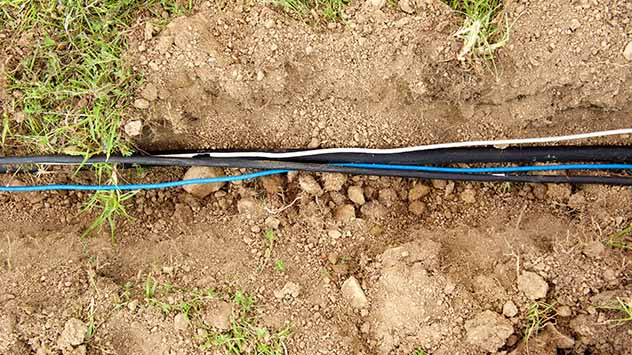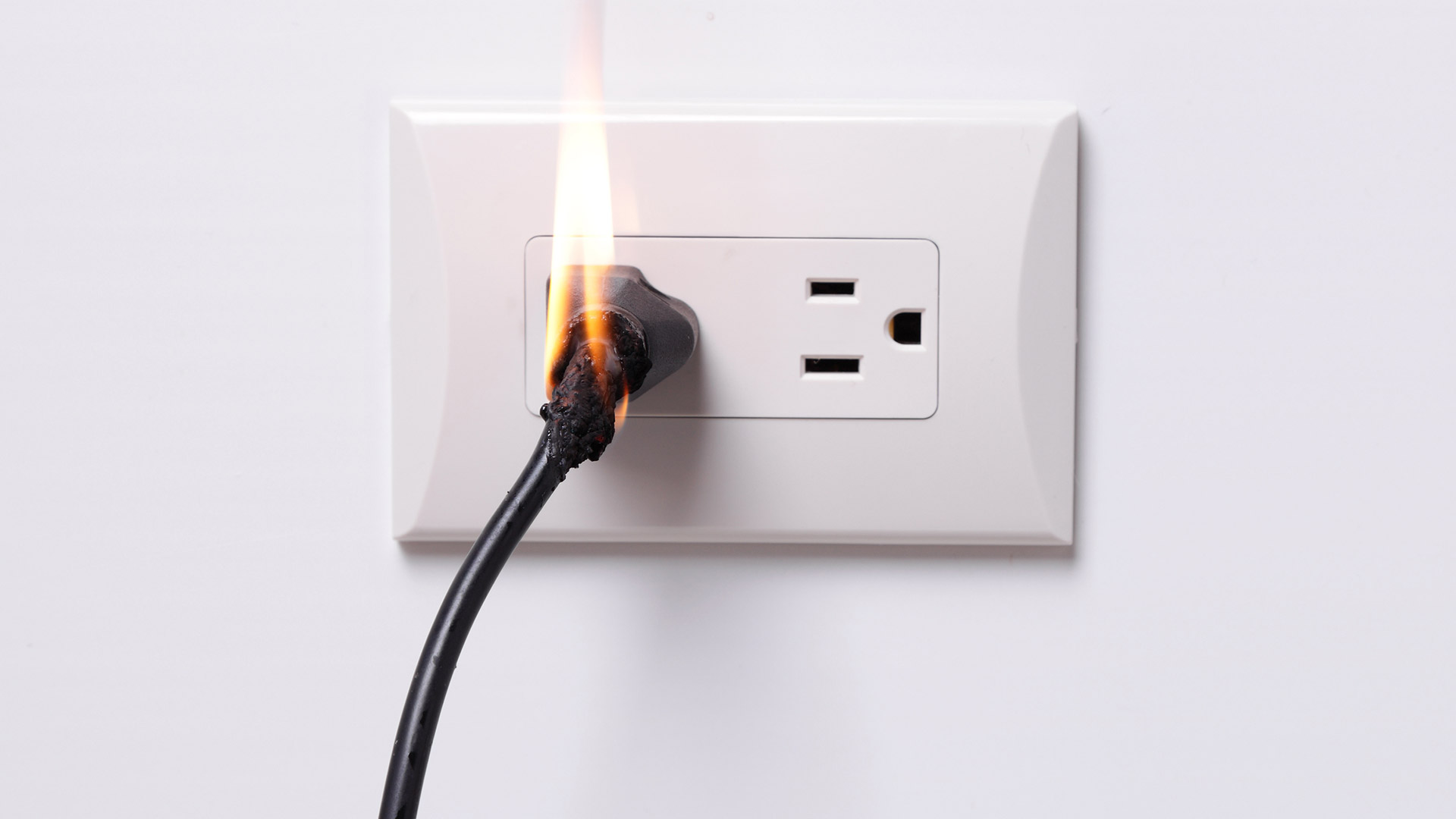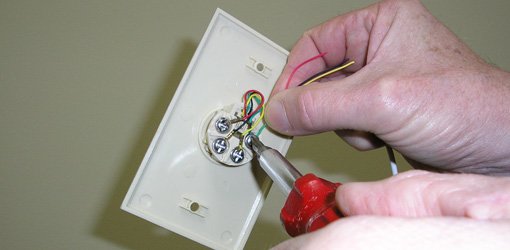Rewiring a house means replacing old or unsafe electrical wiring to ensure your home is safe, up to code, and capable of handling modern power needs. If your home has outdated wiring, frequent breaker trips, flickering lights, or ungrounded outlets, a full rewire may be necessary to prevent fire hazards and electrical failures.
For most homes, rewiring includes upgrading the electrical panel, running new wires, and installing modern outlets and switches. Since this often requires opening walls and ceilings, it’s a major project that should be done by a licensed electrician.
Costs vary based on home size and complexity, but a full rewiring job typically ranges from $4,000 to $15,000, with larger or older homes reaching $20,000 or more.
In this guide, we’ll break down when a rewire is needed, what it involves, and how to plan for the costs.
Understanding Your Electrical Needs
Before starting a rewiring project, it’s important to evaluate how much power your home actually needs. Many older homes were built with electrical systems that can’t handle today’s high-energy demands from modern appliances, home offices, and entertainment setups. A proper assessment ensures your new wiring system is safe, up to code, and built to handle future upgrades like electric vehicles or solar panels.

Evaluating Your Current Electrical Panel
Your home’s electrical panel (also called a breaker box) controls how much power can safely flow through your wiring. If your home was built decades ago, it may still have a 60-amp panel, which is too small for modern electricity needs. Most homes today use 100-amp or 200-amp panels:
- 100-amp panels – Suitable for homes up to 3,000 square feet with standard appliances and moderate energy use.
- 200-amp panels – Ideal for larger homes, electric vehicle chargers, or high-energy appliances like tankless water heaters.
If your breakers frequently trip or you notice flickering lights when using multiple appliances, your panel might be overloaded and in need of an upgrade.
Assessing Wiring and Fixture Upgrades
Rewiring isn’t just about replacing old cables—it’s also a chance to upgrade your home’s outlets, light fixtures, and switches for better safety and convenience. If you haven’t updated your home wiring since before the 1980s, it may have outdated aluminum wiring or ungrounded outlets, which pose a fire hazard. It’s important to replace old wiring to mitigate the risk of fire. Additionally, if you notice frayed wires, frequent power surges, or discolored outlets, these could be signs that your home’s wiring needs more than just minor upgrades.
DIY vs. Professional Rewiring
Rewiring a house is a complex job that requires careful planning, knowledge of electrical codes, and the right tools. While tackling it yourself might save money up-front, mistakes can lead to electrical fires, failed inspections, or costly repairs down the road.
If you’re comfortable working with electrical systems and understand local code requirements, a partial DIY approach (like replacing outlets or running new wiring in accessible areas) may be manageable. However, for whole-home rewiring, hiring a licensed electrician ensures safety, code compliance, and a faster, more reliable installation. Read on for more information on each approach to rewiring your home.
The DIY Approach
Rewiring a home yourself can be a time-consuming and risky task. Mistakes can be costly and dangerous, so it’s crucial to know what you’re getting into. If you plan to take the DIY route, follow these steps:
- Know the Codes – Research local electrical codes and permit requirements before starting. Many areas require licensed electricians for major wiring work.
- Plan Your Circuits – Map out where you’ll need outlets, switches, and dedicated circuits for large appliances.
- Get a Professional Checkup – Have a licensed electrician inspect your existing wiring and review your rewiring plan before starting.
- Find an Inspection Electrician – Some electricians will inspect DIY work for safety and code compliance. Make sure you secure an inspection before a professional takes over your work.
Even with careful planning, some tasks—like upgrading the electrical panel—are worth hiring a professional electrician to complete.
Hiring a Professional Electrician
For most homeowners, hiring a professional electrician is the safest and smartest option when rewiring a house. A licensed electrician ensures the job meets local code requirements, passes inspections, and avoids major safety hazards.

When hiring a professional electrician, follow these steps:
- Get Multiple Quotes – Compare estimates from at least three electricians to ensure fair pricing.
- Check Licensing and Insurance – Always hire an electrician who has the right license to work in your state and proper liability insurance.
- Ask About Warranties – Many electricians offer warranties on their work, protecting you from future issues.
- Verify Experience – Look for electricians experienced in whole-home rewiring and ask for references from past clients.
A professional electrician can spot hidden issues, troubleshoot problems quickly, and ensure your rewiring doesn’t interfere with other home systems. While it costs more up-front, it can save thousands in repairs, fines, or safety risks down the line.
Creating a Rewiring Plan
A successful rewiring project makes sure that your home’s electrical system is safe, efficient, and ready for future upgrades. Before starting, take time to assess your current power needs and anticipate changes, so you won’t have to modify the system again in a few years.
Make a List of Current and Future Appliances
Your home’s electrical demand isn’t just about today—it’s about what you’ll need in the next 10 to 25 years. To start, list all major appliances and additions you have planned to ensure your wiring system can handle future upgrades without expensive modifications. Consider:
- HVAC systems – Central air, heat pumps, or electric furnaces.
- Kitchen appliances – High-power items like refrigerators, ovens, dishwashers, and microwaves.
- Home office and entertainment setups – Computers, large TVs, gaming systems, and sound equipment.
- High-energy devices – Hot tubs, power tools, electric vehicle (EV) chargers, and home workshops.
Map Your Electrical Layout
Sketch a simple floor plan of your home, marking where you need:
- Outlets (including USB-equipped or smart outlets).
- Light fixtures and switches.
- Dedicated circuits for heavy-duty appliances.
A clear electrical map helps your electrician design a logical, efficient wiring system while keeping costs in check. Be open to their recommendations—sometimes minor changes can improve safety and functionality.

Divide Your Home Into Electrical Zones
Segmenting your home into electrical zones makes troubleshooting easier and improves efficiency. Common zones include:
- Kitchen – Requires multiple dedicated circuits for high-energy appliances.
- Living Room & Bedrooms – General-use outlets plus dedicated circuits for TVs or computers.
- Bathrooms & Laundry Room – Need GFCI outlets for moisture protection.
- Garage & Outdoor Areas – Essential for power tools, security lighting, or EV charging.
By planning before rewiring begins, you’ll avoid costly last-minute changes and ensure your home is wired for both current and future needs.
Setting a Budget for Rewiring
Rewiring a house is a significant investment, with average electrician costs ranging from $4,000 to $15,000, depending on your home’s size, age, and wiring complexity. Larger homes or those requiring extensive updates can exceed $20,000. Planning your budget carefully ensures you get safe, high-quality work without unexpected expenses.
Key Cost Factors
Several factors influence the total cost of a rewiring project:
- Home Size & Age – Older homes often require more work to bring wiring up to code.
- Extent of Rewiring – A full-house rewire costs more than targeted upgrades.
- Labor & Materials – Licensed electricians typically charge $50–$120 per hour, and high-quality wiring materials adds to the expense.
- Permits & Inspections – Most local codes require professional approval, adding fees to your project.
While it’s tempting to go with the lowest bid, prioritize quality and safety over cost alone. Cheaper materials and inexperienced labor can lead to electrical failures or safety hazards down the road. Investing in a skilled electrician and durable wiring reduces the risk of costly repairs later.
Plan for Unexpected Costs
Rewiring projects often reveal hidden issues, such as old, unsafe wiring or outdated electrical panels. To avoid financial strain, set aside a contingency fund of 10% to 20% of your total budget. This allows you to prepare for surprises without derailing the project.
Find a Qualified Electrical Contractor
Learning how to hire an electrician for your home is critical for a safe, code-compliant, and long-lasting rewiring job. A licensed and experienced contractor will ensure your home’s electrical system is modern, efficient, and built to handle future needs.

How To Find a Reliable Electrician
Start by gathering recommendations from friends, neighbors, or trustworthy online sources. You can also check with local trade associations or licensing boards for reputable contractors. Once you have a shortlist, take these steps:
- Compare Multiple Quotes – Get at least three detailed estimates to understand pricing and scope.
- Verify Licensing & Insurance – Your electrician should have a license in your state and carry proper liability insurance.
- Check Reviews & References – Ask for past client testimonials and look for consistent positive feedback on reliability and workmanship.
Key Questions to Ask
Before hiring an electrician, ask:
✅ How many years of experience do you have with whole-home rewiring?
✅ Can you provide references from past rewiring projects?
✅ What kind of warranty do you offer on your work?
✅ How do you handle unexpected issues, such as hidden wiring problems?
✅ Will you handle permits and inspections, or is that my responsibility?
A quality electrician won’t just give you a quote—they’ll explain the process, potential challenges, and ways to improve your home’s electrical system. Taking the time to vet contractors properly can save you from costly mistakes and safety risks down the road.
Be Prepared for Disruption
Rewiring a house isn’t just about replacing wires—it involves cutting into walls, shutting off power, and working around daily routines. Preparing ahead of time can help minimize stress and inconvenience.
Timeline and Stages of Rewiring
A full-home rewiring typically takes 3 to 10 days, depending on the home’s size and complexity. The project is completed in two main stages:
- Rough-In Stage (First phase)
- Remove old wiring
- Install new cables, circuits, and electrical boxes
- Open walls and ceilings to access wiring
- Finishing Stage (Second phase)
- Install new outlets, switches, and light fixtures
- Test the system for safety and functionality.
- Perform final inspections to ensure code compliance
Larger homes or those with hard-to-access wiring may take longer, so be prepared for possible delays.
Living Arrangements During Rewiring
Rewiring a home means extended power outages, which can make daily life challenging. If the project is expected to last more than a few days, consider whether staying elsewhere is the better option. Some electricians can rework circuits in phases to keep limited power available, but this isn’t always possible.
If you choose to stay home, prepare for disruptions by setting up battery-powered lights, a portable cooking option, and backup chargers. Keep in mind that construction dust, noise, and restricted access to rooms may add to the inconvenience. For longer projects, arranging temporary housing with family, friends, or a short-term rental may be the most comfortable solution.
Communicating With Contractors
Good communication with your electrician helps prevent misunderstandings and keeps the project on track. Ask for regular progress updates and clarify any concerns as they arise. If unexpected issues come up—like hidden wiring damage or code upgrades—discuss the options before work continues.
Rewiring projects can sometimes take longer than expected, so confirm the timeline up-front and check in frequently to stay informed about any delays or extra costs. Keeping an open dialogue ensures everything goes smoothly and minimizes surprises along the way.
Securing Pets and Valuables
Rewiring is noisy, messy, and disruptive—making it stressful for pets and risky for valuables. Keep pets in a quiet, secure space away from the work area. Alternatively, consider boarding them if the project will take more than a couple of days.
Cover or relocate fragile and valuable items to protect them from dust, vibrations, or accidental damage. If electricians need access to storage areas, clear pathways in advance to prevent delays. Taking these steps ensures a smoother process for both your home and the workers.
If you’re ready to hire an electrician to rewire your house, use the form below to get an estimate from a contractor in your area.
This site receives compensation from the companies featured in this listing, which may impact where and how products appear. This listing doesn’t feature all companies, products, or offers that may be available.









